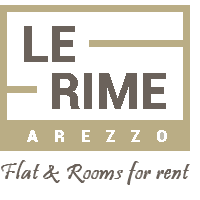
Museum of Medieval and Modern Art
The Museum is housed in the historic Bruni Ciocchi building, one of the most beautiful Renaissance buildings in the city, located in the San Lorentino area, Porta del Foro district.
The building was built in the mid-fifteenth century at the behest of Donato Bruni, son of the famous humanist Leonardo, chancellor of the Florentine Republic, on previous fourteenth-century settlements of the Ghibelline family of the Accolti. It was then acquired by the family Ciocchi dal Monte, of Monte San Savino, and was probably the town seat of Cardinal Giovan Maria Dal Monte, who later became Pope with the name of Julius III.
From the seventeenth century it became the owners of the Barbolani di Montauto accounts, originating from the Valtiberina, who restructured it by building the monumental staircase, the gallery and the great hall.
From 1816 the palace passed to the Tuscan government that used it to the State Monopolies, making a deposit of various kinds, above all rooms, and placing the customs offices, for this reason it is also known as “ Palazzo della Dogana “.
The building, now owned by the state, is spread over three floors around a large courtyard porticoed on three sides with elegant columns of pietra serena, for which the name of Bernardo Rossellino has been made. in Arezzo in 1434, but whose stylistic references are more in keeping with Brunelleschi’s architecture. On the back of the building, located at the level of the first floor, is instead a hanging garden of Renaissance inspiration.
The National Museum of Medieval Art and Modern can be considered among the most interesting in Tuscany for its wealth and variety of works, reflecting the union of several collections and art collections of different backgrounds and backgrounds , testify to the highest degree the cultural history and artistic development of Arezzo.
The Museum was established in 1958, following an agreement between the Ministry of Education, which then included the “Belle Arti”, and the Municipality of Arezzo, solving long-standing issues of management of the collections of the municipal art gallery.
These same collections derived, among other things, from the suppression of religious Orders desired by the State after the Unity of Italy, from the antiquarian and aristine collecting of the Bartolini, Funghini and Fossombroni, from the collections Bacci, Rossi and Subiano, merged in the artistic patrimony of the Fraternity of the Laity , a civic and religious institution founded in 1262, which had entrusted them in perpetuity to the City since 1934, and that already in the nineteenth century thanks to the naturalist Marcantonio Fabroni, had founded its own museum.
In addition to those coming from the territory, these collections were added by works from the Florentine Galleries stores since the Thirties and then subsequently in the Fifties, years in which, with works coming from Florence, The setting up of the gallery of the State Museum of Casa Vasari was carried out. In 1964 the museum was enriched by the Salmi Collection, at the behest of the illustrious art historian of Arezzo, followed in 2010 by a new donation desired by his daughter.
After the heavy bombings of the Second World War at the Palazzo Pretorio , where the municipal art gallery was housed, with serious loss of works, the collections are housed in the Palazzo Bruni Ciocchi, restored and set up by the Superintendencies Monuments and Galleries of Florence, then with the establishment in 1967 goes to the Superintendence of Arezzo and finally, with the latest ministerial reform, becomes part of the Museum of Tuscany.


